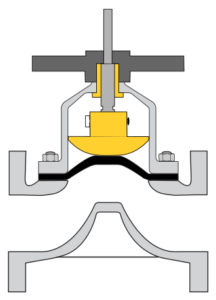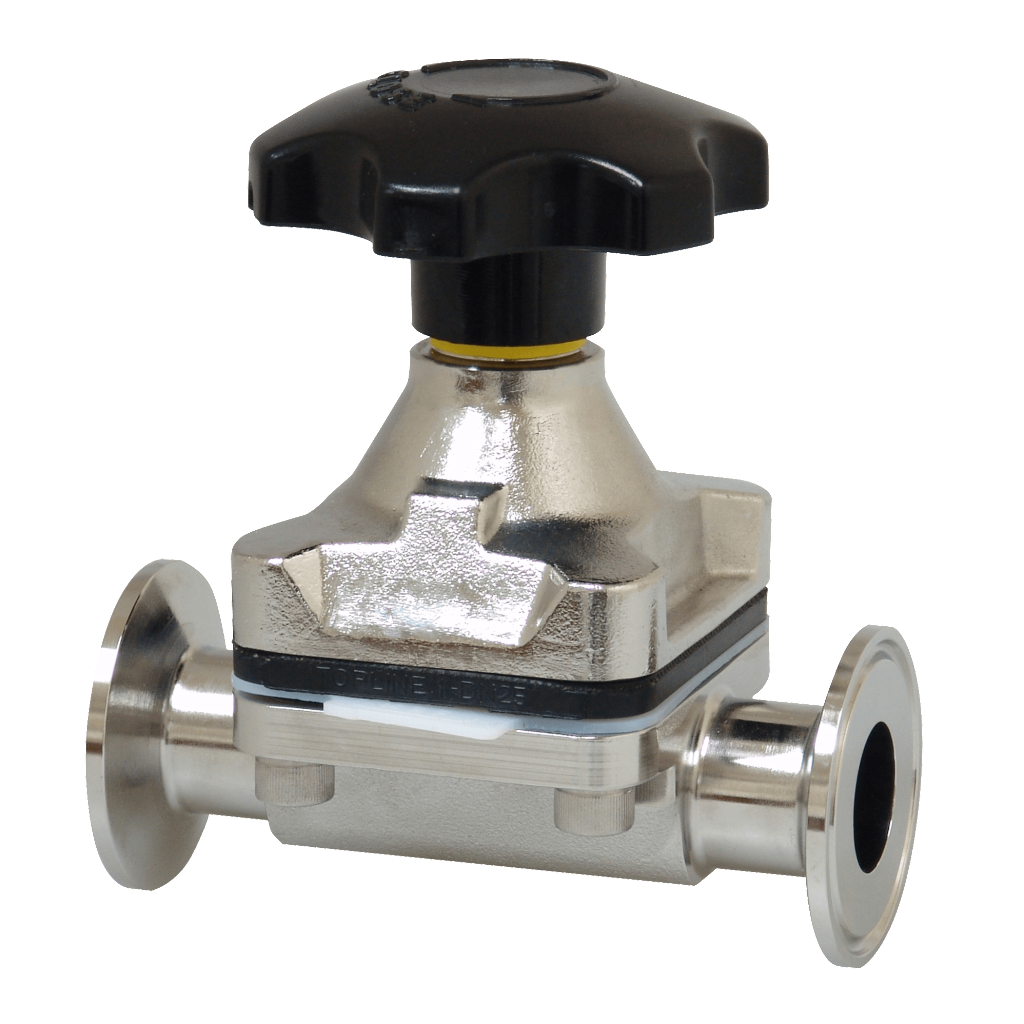What is a Diaphragm Valve?
Diaphragm valves use a flexible seal to control the flow of liquids or process media. There are two types of designs for diaphragm valves: straightaway and weir. Straightaway diaphragm valves operate by pressing the flexible seal down upon the flat-bottomed body of the valve. A Weir-style valve presses the flexible diaphragm seal down upon the dam-like weir to prevent the flow of liquids.
The Biopharmaceutical industry has settled on the Weir style of design which is the only type of diaphragm valve that we currently offer. In fact, weir diaphragm valves are considered the cleanest and most drainable valve solution on the market which is why this style of valves is used almost exclusively by the Biopharma industry for their applications.

Weir-style Diaphragm Valve (Source Wikipedia)
How Does a Diaphragm Valve Work?
The diaphragm valve opens and closes via a turn handle which is connected to a plunger. The plunger applies pressure to the diaphragm which then flexes up or down to control flow. Turning the handle clockwise will lower the diaphragm causing flow to decrease while turning the handle counterclockwise raises the diaphragm increasing product flow through the valve.
Watch a diaphragm valve in action
With its easy to use handle, a diaphragm valve can be used for both on, off and throttling purposes. An important design element of this type of valve is that the diaphragm acts not only as a way to control the flow but also as a seal to prevent fluid media from coming in contact with the rest of the valve body. This is another reason the Biopharmaceutical industry mainly uses this style of valve.
Operating a Diaphragm Valve
An important tip to remember while operating a diaphragm valve is to not close the valve too tightly. This may cause the diaphragm to become stuck or possibly tear the seal rendering the valve inoperable. A broken seal can cause leaking from both the inlet and outlet along with the valve body itself.
The valves offered by Sanitary Fittings include a visual indicator on the valve stem to determine the current position of the valve. In the picture below the yellow line indicates that this valve is currently in the open position. A valve in the closed position would not display any visual yellow indicator.

Yellow Valve Position Indicator
Conclusion
Sanitary Fittings is proud to offer diaphragm valves as part of its extensive online catalog of sanitary valves. These valves come standard with a 20Ra Surface Finish geared toward the rigorous demands of the Biopharmaceutical Industry (learn more about Surface Finish). These valves are in stock and ready to ship upon demand. Please contact us if you have any questions related to diaphragm valves or other fittings we have to offer.

